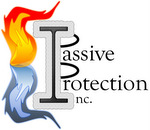Public and Private Academic Facilities – Daycare, Preschool, K-12, University and College
Fire safety is a top priority in academic institutions of all types. The large number of students and faculty in each location necessitates high standards in both fire prevention and fire response. Fire plans are designed for optimal exit time, but with a finite number of exits, young children, persons with limited mobility, and the convergence of multiple rooms to common corridors, providing additional escape time is invaluable in an emergency situation.
To this end, many academic institutions have adopted in-house SOP’s that exceed those requirements enforced by Fire and Building Codes. A critical part of these systems is a passive fire protection application to surfaces that are most vulnerable to fire propagation.
Page Jumps:
HEOA
The Higher Education Opportunity Act – 2008 requires institutions with dormitories to publish annual reports detailing fire safety statistics as well as campus fire safety practices and standards.
Implementing Program Management through Passive Protection and our affiliate CODEpliance, Inc. is an effective and efficient method to fulfill:
“plans for future improvements in fire safety” Public Law 110-315 HEOA sec 488 (i)
and…
“identify exemplary fire safety policies, procedures, programs, and practices, including the installation, to the technical standards of the National Fire Protection Association, of fire detection, prevention, and protection technologies in student housing, dormitories, and other buildings” Public Law 110-315 HEOA sec 488 (i)
Fireproofing Applications
As part of each location’s safety plan, properly applied and maintained flame retardant treatments provides a valuable measure in preventing the ignition and spread of fire, and in the case of a fire will significantly decrease the amount of smoke generated.
Passive Protection, Inc. performs all treatments on-site using non-toxic products and scheduling is done at the convenience of the customer. Initial certifications, cleaning, and recertifications are often completed same-day. Each site is left clean, protected, and compliant.
Inherently Flame Retardant (IFR) Fabrics
It is very common for IFR fabrics to be specified for fabrication of furnishing and decorations during the Design Build phase. A common misconception is that these treatments are flame resistant forever. The processes which impart flame resistant properties are just as susceptible to failure over the “life” of the fabric as topical treatments. The “life” of the fabric depends heavily on a variety of factors such as maintenance procedures such as laundering or commercial cleaning, a lack of maintenance causing the buildup of airborne grease and dirt or dust, and external environmental factors including UV or sunlight damage and humidity. Wear and tear, location, and handling also play a large role in diminishing the original flame ratings.
All fabrics, IFR included, require formal Program Management to ensure proper protection is being afforded.
Compliance for Inspection and Insurance
Because of the potential risk, fire prevention units are diligent in ensuring consistent compliance with all applicable codes and routinely conduct inspections to verify systems are in place, up-to-date, and functioning properly. Valid and active documentation is critical, including Flame Certificates. Each Passive Protection application is finalized with a Flame Certificate listing all requisite information for submission to Fire Prevention teams and in support of routine inspections.
Beyond Building and Fire Code requirements are liability and insurability challenges. As with most passive safety systems, confirming their continued effectiveness is very difficult – they are, by nature, designed to be unrecognized until an emergency arises. Flame retardants and fireproofing applications must be monitored, renewed, and recertified over time and following maintenance or refinishing. With our affiliate, CODEpliance, Inc., Compliance Monitoring is designed to actively track applications and report upcoming expiration dates. This information is readily available for consideration by insurers in determining coverage premiums and deductibles.
Fireproofing Application Table
| Where | When | What | Who |
|---|---|---|---|
| Means of egress | Inspection preparedness | Upholstery | Operations Management |
| Lobbies | Internal Compliance Audits | Window Treatments | Facilities Services |
| Common Areas | Routine Maintenance SOP | Decorative Wall-coverings | Public Safety Programs |
| Hallway Corridors | New building design | Seasonal Decorations | Risk Management |
| Meeting rooms | Historic retrofits | Banners | Capital Projects Management |
| Function Halls | Interior renovations | Room partitions | Planning and Engineering |
| Dining Halls | Building use conversions | Fabric Walls | Environmental Health and Safety |
| Lounges | Convention Booths | Green Building and LEED | |
| Club Rooms | Tablecloths | ||
| Utility rooms | Expandable displays | ||
| Classrooms | Stage curtains | ||
| Dormitories | Building materials | ||
| Fraternity & Sorority Houses | Interior Finishes | ||
| Administrative Buildings | Structural Lumber | ||
| Libraries | |||
| Auditoriums | |||
| Performing Arts Centers | |||
| Gymnasiums |
Passive Protection, Inc. Services
| Applicable Services |
|---|
| Compliance Program |
| Flame Retardants |
| Fireproofing Application |
| Flame Certificates |
| Specialized Maintenance |
| Recertification |

